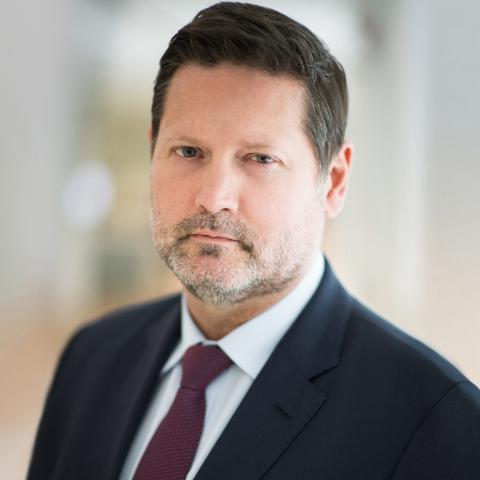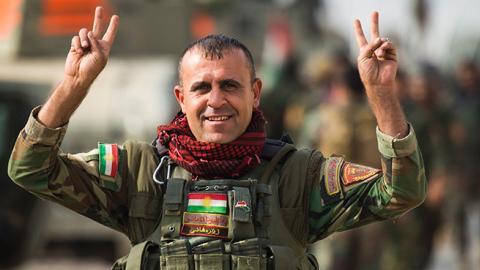My first deployment to Iraq was as an embedded adviser to a reflagged Kurdish Peshmerga battalion in Mosul in 2005. The 3rd Battalion of the 4th Brigade of the 2nd Iraqi Army Division was a Peshmerga unit from Duhok and would be responsible for conducting counterinsurgency operations in West Mosul at the height of the Sunni insurgency.
We were 10 American advisers embedded with a 500-man Kurdish force commanded by Col. Nooraldeen al-Herki in the heart of al Qaeda’s stronghold in West Mosul. We were also the luckiest 10 Americans in Iraq — we had a pro-American force that made American partner units more effective in decimating al Qaeda.
We partnered with LTC Eric Kurilla’s Deuce 4, a Stryker Battalion out of Fort Lewis, Washington. The Peshmerga unit I was with was his go-to partner unit for developing intelligence and conducting raids against al Qaeda High-Value-Targets — military for al Qaeda leadership. This U.S.-Peshmerga partnership was very successful against al Qaeda terrorists in Mosul and oversaw security for parliamentary elections in 2005.
In 2006, we pushed to the east side of Mosul or as the Kurds call it the “left-side” as they look south from Kurdistan. Security improved in Mosul due to the effectiveness of this Peshmerga unit to the point where President George W. Bush touted Mosul as an example of what an effective operation looks like.
Most of the unit was familiar with Mosul’s neighborhoods and tribal leaders, and they spoke Mosul’s dialect of Iraqi Arabic. They effectively helped U.S. forces protect the 2.2 million Sunnis, Kurds and Christians, and pushed al Qaeda out of Mosul — all without knocking down a single building in Iraq’s second-largest city.
With security improving, this unit, along with its American partner unit, deployed to Baghdad to take part in the operation that decimated al Qaeda — The Surge.
Most Iraqi units at the time were afraid to take on both al Qaeda and Iranian-backed Shia militias, but this unit did exactly that when it was deployed to one of the most dangerous parts of Baghdad. This Peshmerga unit was one of the first units capable of operating as a national force, meaning it could be effective in areas bordering Kurdish areas and as effective in areas where Shia militias and al Qaeda stoked sectarian flames.
The Peshmerga were the chosen force to fill the ranks of the Iraqi Special Operations Forces (ISOF); they partnered with American Special Operators to conduct raids against key al Qaeda and Shia militia targets.
The Peshmerga were so effective that Iraqi Prime Minister Maliki saw them as a potential threat and brought the ISOF under his direct control — and purged the predominantly Kurdish force and replaced them with Shia Party loyalists. He took a counterterrorism strike force and made it a countercoup force — he politicized it and, as a result, made it ineffective.
Mr. Maliki didn’t stop there: He purged effective Peshmerga and Sunni Arab Iraqi commanders, prompting my return to Mosul in 2008 to assess the situation on behalf of United States Forces-Iraq (USF-I) Commander Army Chief of Staff Gen. Raymond T. Odierno. Mr. Maliki brought false charges against effective Kurdish and Sunni commanders, only to drop the charges once they were removed from command. It was the easiest way to have them removed from their positions and filled with his cronies.
The 2nd and 3rd Iraqi Divisions that operated in Talafar and Mosul were now politicized to the point where they were ineffective in combat — the Peshmerga were no longer wearing the Iraqi Army uniform. Mr. Maliki had successfully purged competent Kurdish commanders and their troops from the two divisions that helped decimate al Qaeda during The Surge.
With the purge complete and Mr. Maliki’s cronies in place, ISIS saw an opening. Two short years later — Mr. Maliki’s politicized force abandoned the citizens of Talafar and Mosul and left U.S. tanks and Humvees to ISIS.
There is no doubt that if those effective Sunni and Peshmerga commanders had remained, ISIS would not have been able to roll into Mosul and Talafar — evidenced by the wall ISIS faced when it tried to push into Kurdish territory. The Peshmerga held their own, despite Baghdad’s decision to push U.S. arms and equipment to Islamic Revolutionary Guard Corps-backed Shia militias, but deny them to the Peshmerga.
The Islamic State’s first loss of territory was to a Peshmerga force with U.S. air support — the Mosul Dam, north of Mosul, Iraq. I later had a chance to brief Gen. John Allen upon his appointment by President Barack Obama as the ISIS czar — I told him that ISIS cannot hold territory against a capable ground force with U.S. air support and cited the Peshmerga’s role in retaking the Mosul Dam as an example. It was this example that was used as model for our U.S. strategy.
The Peshmerga stopped ISIS from spreading into Kurdish territory in Iraq, partnered with U.S. Special Operators to bring combat power to the Syrian Kurds fighting ISIS in the Syrian city of Kobane, and sealed off Mosul for two years while waiting for Baghdad to mobilize against ISIS and begin the Mosul offensive.
The U.S. relies on Kurdish intel and weighs it higher than what comes out of Baghdad’s intel agencies; we rely on our trusted Kurdish allies and proven brothers in combat against al Qaeda and now in this fight against ISIS. The fight is not over and continued success against ISIS will remain dependent on our continued relationship with our Kurdish allies.
When Iraqis — all Iraqis — are worried about security, they go to Kurdistan. There will always be an answer to emerging terrorist threats in Iraq — and the answer will come from the north. From “those who face death” — the Peshmerga.



















